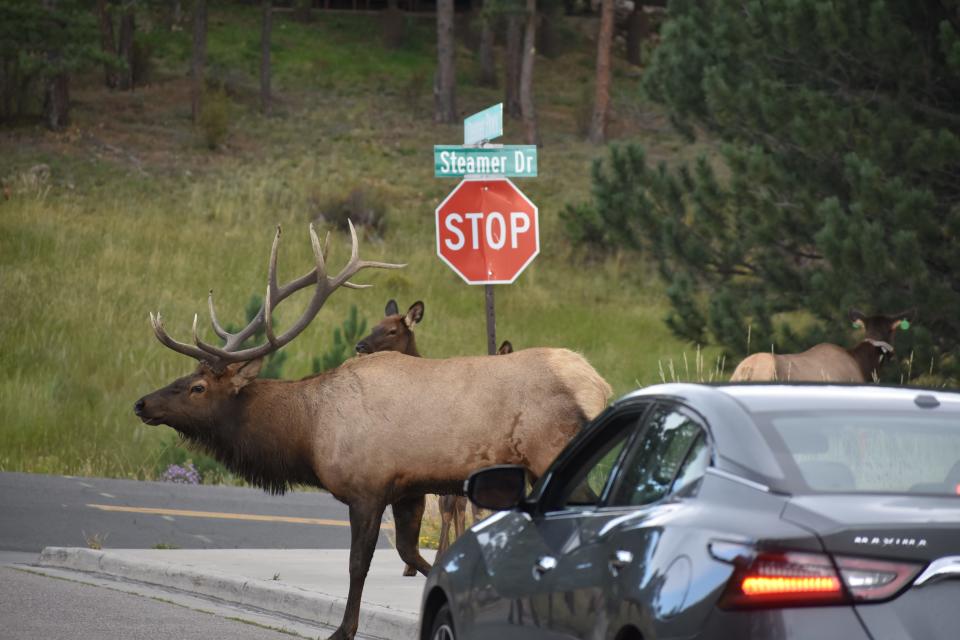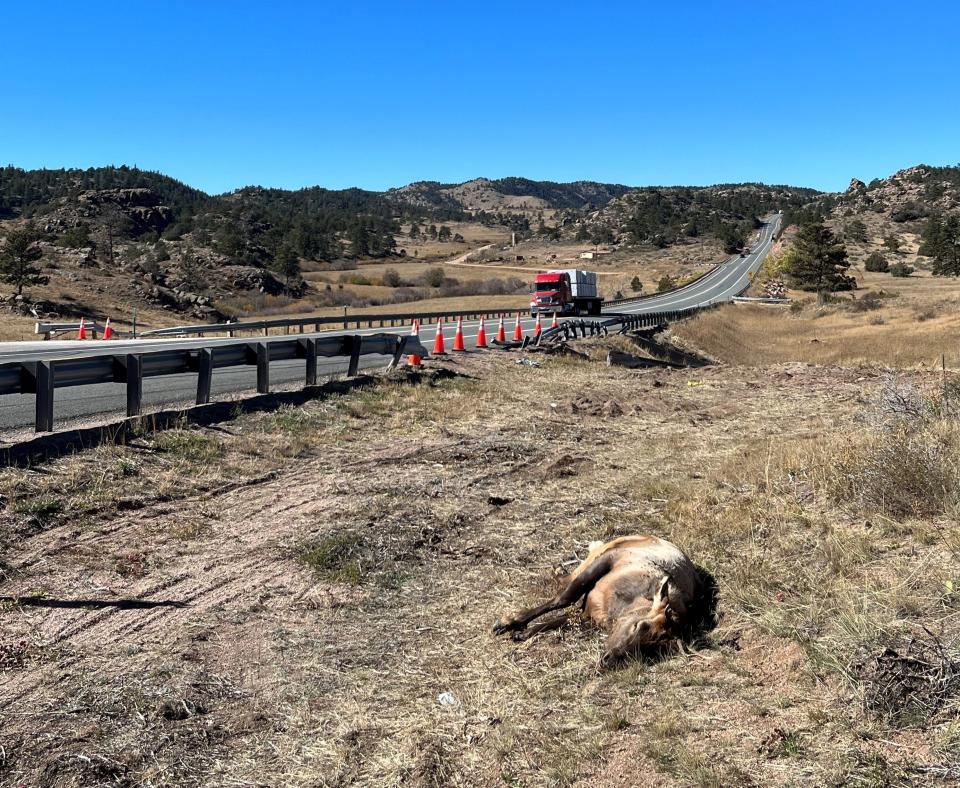Colorado drivers kill thousands of wildlife each year. Here's how to prevent those crashes
Drivers expect to see wildlife, such as elk and deer, on the streets of Estes Park.
But far fewer drivers expect an encounter with wildlife while driving Colorado's rural highways, resulting in deaths and injuries to humans as well as wildlife.
Here is a breakdown of the impacts of wildlife vs. vehicle collisions, when they are most likely to happen, highway hot spots in Larimer County and Colorado, what wildlife is most often struck and ways to prevent crashes.
Wildlife vs. vehicle crashes happen more often than most drivers think
In terms of crash causes, wildlife ranks as the third-leading factor (behind speeding and inattentive driving) in Colorado, according to the Colorado Department of Transportation.
Colorado averages nearly 4,000 reported wildlife vs. vehicle crashes annually, resulting in $80 million damages. Experts agree such crashes go largely unreported.
Where Colorado ranks among states in number of wildlife vs. vehicle collisions
No. 41, according to State Farm Insurance.
Drivers in Colorado have a 1 in 240 chance of a collision with wildlife that results in a claim, according to State Farm Insurance.
The U.S. average is a 1 in 127 chance.
West Virginia tops states with a crash chance of 1 in 38. Montana is second at 1 in 53.
Most likely times of day and months when wildlife vs. vehicle collisions happen in Colorado
Dusk and dawn, when wildlife is most active.
November, October and December, in order, are months with the highest number of large wildlife vs. vehicle collisions.
Reasons for these months being highest include mating, seasonal migration and hunting seasons, which result in deer, elk and other large animals moving more often.

Which wildlife species are killed most often by vehicles in Colorado?
Of the larger wildlife species, here's the breakdown from 2022, according to the Colorado Department of Transportation:
Deer: 4,588, which comprises 62.5% of all reported wildlife deaths vs. vehicles
Elk: 654
Black bear: 246
Pronghorn antelope: 93
Coyote: 85
Fox: 60
Moose: 59
Mountain lion: 47
Bobcat: 37
Larimer County hot spots for wildlife vs. vehicle crashes
In 2022, Larimer County reported 29 personal damage only crashes and five injury crashes, which resulted in seven human injuries related to crashes with wildlife. The average over the last five years is 32.6 such total crashes. Deer were struck in 71% of those crashes.
Interstate 25 around where the Poudre River flows underneath the interstate
U.S. Highway 287 between Livermore and Virginia Dale
Red Feather Lakes Road (Larimer County Road 74E)
Larimer County Road 23 (Centennial Drive, Horsetooth Reservoir area)
Larimer County Road 38E (Horsetooth Reservoir area)
Source: Larimer County and Colorado Department of Transportation

Colorado highways with highest risk for vehicle collisions with wildlife
Colorado Parks and Wildlife and the Colorado Department of Transportation have installed various wildlife crossing structures in key areas around the state to help wildlife cross highways safely.
According to Colorado Parks and Wildlife, drivers have the highest risk of a wildlife collision in the following areas:
Interstate 70: Floyd Hill, Mount Vernon Canyon and Eagle areas
U.S. Highway 285: Morrison area
U.S. Highway 160: Durango to Pagosa Springs and Durango to Mancos
U.S. Highway 550: North of Durango and from Montrose to Ouray
Interstate 25: Castle Rock to Larkspur
Colorado Highway 82: Glenwood Springs to Aspen
U.S. Highway 36: Boulder to Lyons
Colorado Highway 93: Golden to Boulder
Best ways for drivers to avoid hitting wildlife
Driving more slowly increases reaction time and reduces the chance of a collision.
Pay attention to wildlife crossing signs, which indicate higher chances of seeing wildlife on the road.
Creek and river crossings and forested areas generally are where wildlife are more often seen.
Scan ahead and to the sides of the road for movement when driving.
When driving at night, watch for shining eyes in headlights. Always look for and be prepared for more than one animal.
Flicking your high beams on an animal in the road may cause the animal to scurry away. High beams also help illuminate dark roads.
Don't swerve if a crash with wildlife is inevitable. Instead, maintain control of your vehicle and don't veer off the road.
If you can avoid hitting the animal, reduce your speed, honk your horn and tap your brakes to warn other drivers. If there are no drivers behind you, brake hard.
Source: Colorado Parks and Wildlife and State Farm Insurance
This article originally appeared on Fort Collins Coloradoan: These Larimer County, Colorado roads are wildlife crash hot spots

